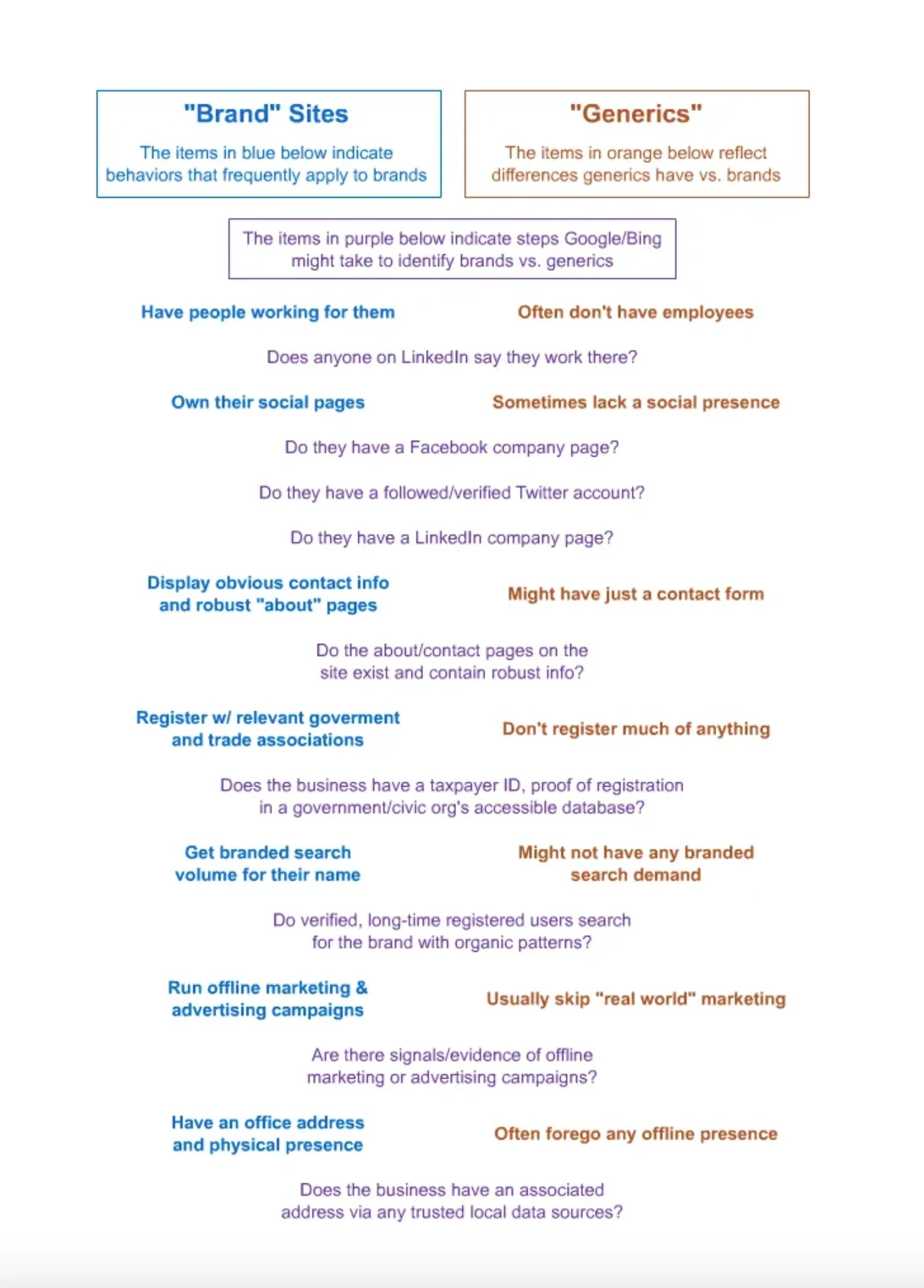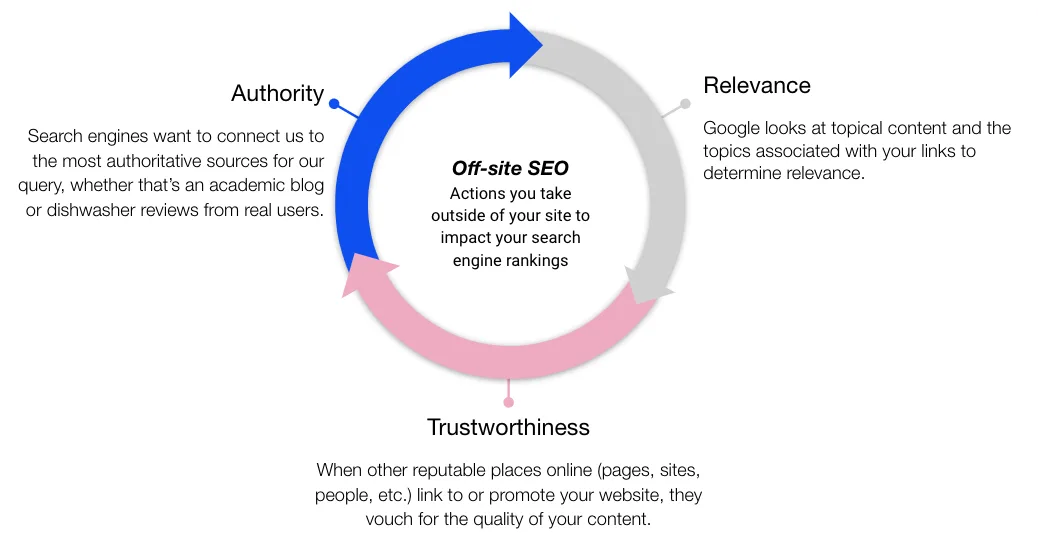
Touted as both the antidote to purchase paralysis from the paradox of choice from infinite buying options — and as the playbook used by conscientious brands like Patagonia and Netflix — brand affinity marketing has been getting a lot of air time.
But what’s talked about less is the positive effect brand affinity can have in organic search.
Let’s take off our marketing hats for a moment and remember that at the end of the day, we’re consumers, we’re internet users, and first and foremost — we’re all human. That’s exactly why we tend to gravitate towards businesses that feel less like a provider of a good or service, and more like a brand we can connect with emotionally and ethically.
But it’s not only up to brands to communicate their values and trustworthiness to potential customers. In our logged-on world, we look for recommendations from friends, family, and even strangers on the internet, to determine what we purchase. It’s plain to see that building a reputable brand that consumers actively promote creates a feedback loop that tends to pay off on organic channels — and especially organic search.
If your business would benefit from more traction in organic search, you should consider focusing on brand affinity marketing. Here’s why it affects SEO.
Brand affinity 101: how it works
Brand affinity is a concept (and sometimes a metric) used by marketers to help predict how consumers will behave when faced with a purchasing decision. In short, it describes a segment of consumers who believe a certain brand aligns with their values. When consumers feel this way about a brand, it tends to build a lasting relationship and keep them coming back for the long haul.
But how is this different from brand awareness? Simply put, brand affinity stems from customer advocacy, whereas awareness stems from brand exposure from activities like paid social campaigns — which too many businesses don’t realize, when done in excess, can actually harm customer sentiments about their brand.
According to brand affinity experts at Wistia, almost all brand building activities today hinge on increasing awareness, under the false pretense that awareness leads to brand affinity. The reality is that quality over quantity is key for boosting brand affinity. No matter how many times a consumer has interacted with your brand, they’re unlikely to feel much brand affinity unless those interactions contain some emotional depth.
So what does it look like when your audience has a strong sense of brand affinity for your company?
Though it can take many forms, brand affinity can be quantified with some help from social proof like social media mentions or customer reviews.
The role of brand affinity in organic search
Ten years ago, Google’s search results for transactional queries were pretty easy to game. That’s why for the better part of the last decade, Google has been on the lookout for certain ranking factors (like brand signals) to help them determine how high pages should rank in the SERPs.
In many ways, search engines are a giant feedback loop — Google’s M.O. is to serve up the highest quality, most reputable results so happy searchers will come back to them to answer future queries. To help them find the best results out there, Google’s algorithm considers ranking factors that help them differentiate the “brands” (read: who have online evidence of their brand affinity, both on and off-page) from the “generics” (the sites that Google suspects offer a poor customer experience).

Yes, Google looks at a ton of inputs to determine the quality of a search result, but it’s safe to say that the powers that be appreciate it when some of the guesswork around a brand’s quality is done on their behalf.
So, capturing and displaying your brand affinity online, right where Google can see it, is a great way to climb up the ranks in organic search.
How to show off your brand affinity to search engines
While the online landscape is constantly changing with new channels for brand engagement being introduced all the time, there are some pretty timeless methods you can use to make sure your company’s brand affinity is visible in the eyes of Google. Here are three of the best ways to show off your brand affinity to search engines.
1. Target informational queries with top funnel content marketing
While many marketing activities are laser-focused on conversions, top funnel content marketing is a great opportunity to introduce yourself and provide value to your target audience without asking anything in return. Sometimes that means broaching a content topic that your marketing personas are sure to care about, even if the topic is only tangentially related to your product or service.
If you want to boost brand affinity through content marketing, consider targeting top funnel informational queries in addition to the exact commercial keywords you’re going after. Winning readers’ attention in these early moments of their customer journey can actually bias future commercial searches towards your brand.
This kind of bias, along with the feedback loops at play, work together to reinforce the power of brand affinity in organic search. Search Engine Journal says it best:
“You may have never heard of Brand X, but if enough other people have heard of Brand X, then it will have a higher average CTR — and a more prominent position on the SERP. That feedback loop always existed in Google Ads because of Quality Score. Big brands have had huge advantages thanks to brand affinity. People tended to click on ads from brands they knew.
Now the same thing is happening in organic search. There’s a kind of feedback loop where brands you see in search now more closely correlate to the overall popularity of that brand.”
So, aspiring big brands take note: even if readers don’t convert the first time they interact with your site, providing real value without asking for anything in return increases the likelihood that people will remember your business, return to you when they’re ready to convert, and you guessed it — it’ll ignite their brand affinity towards your company.
2. Start collecting reviews to spotlight brand affinity and boost your off-page SEO
For obvious reasons, collecting and displaying customer feedback in the form of online reviews is one of the most straightforward ways to put a spotlight on all of the affinity felt towards your brand. What’s less obvious is that brand-building tactic can also move the needle in organic search because of its role in off-page SEO.
Off-page SEO sums up all the actions you take outside of your actual website that help you come across as authoritative, relevant, and trustworthy in the eyes of Google. Here’s a look at how it works:

This is equally important whether you’re an online or local business: According to Ahrefs, off-page “review signals” are the third most important factor for ranking in Google’s “snack pack” results, and the fifth most important ranking factor in local organic search.
Not only that, but collecting reviews signals to Google — and your future customers — that you’re a brand that can be trusted, and third-party review platforms can strengthen that trustworthy association even further.
Think about it this way: When people search for reviews of your brand, what do they find? If you collect reviews through a third-party platform with strong domain authority like Trustpilot, they’re highly likely to find your profile page complete with review snippets at the top of the SERPs.
3. Grow a social media community around your brand
We’ve established above that brand affinity can lead to higher CTR in the SERPs, so it makes sense to build an authentic and reputable brand anywhere your future customers might be.
Chances are they’re on social media.
Growing a community around your brand on social media boosts brand affinity outside of organic search — but its effects can certainly carry over to organic search thanks to the power of off-page SEO. When a company takes steps to monitor and listen to their online communities, and even interact directly with customers, it creates a better relationship with not only that specific customer, but all of the onlookers online.
For this reason, it’s important to put effort into your social media presence to create the kind of brand affinity that carries over to organic search. Here are some tactics to get started:
Monitor and respond to what followers are saying about your products or services
Reply thoughtfully to as many comments as you can
Show off your customer service prowess in the comments
Use your social channels to offer valuable (and shareable) content without asking anything in return from your followers
Taking measures to establish a strong connection with your followers only increases the trustworthiness of your brand — and the odds that your followers will spread the word about your business.
Embracing the long game of brand affinity for organic search
Too often businesses funnel their time and marketing budgets into optimizing for the platform delivering their branded messages instead of for the people consuming their message. At the end of the day, you can optimize your website as much as you want for what Google wants to see, but what your customers want to see is still paramount for success in organic search and beyond.
To master brand affinity is to master the long game — an approach that can feel foreign in our world of instant gratification and real time performance metrics. As you can see, brand affinity tends to be a byproduct of creating better customer experiences, which doesn’t usually happen overnight.
Whether giving your customers what they want means delivering valuable content for free, rolling out real time customer service on social media, or developing new products in light of customer feedback — if you zero in on what that means for your business, organic traffic-boosting brand affinity is sure to follow.
Ready to jumpstart your brand affinity marketing?
The first step is building up a trustworthy brand reputation. Don't miss your free copy of "6 Ways to Make Trust Your Essential Brand Differentiator" below.



